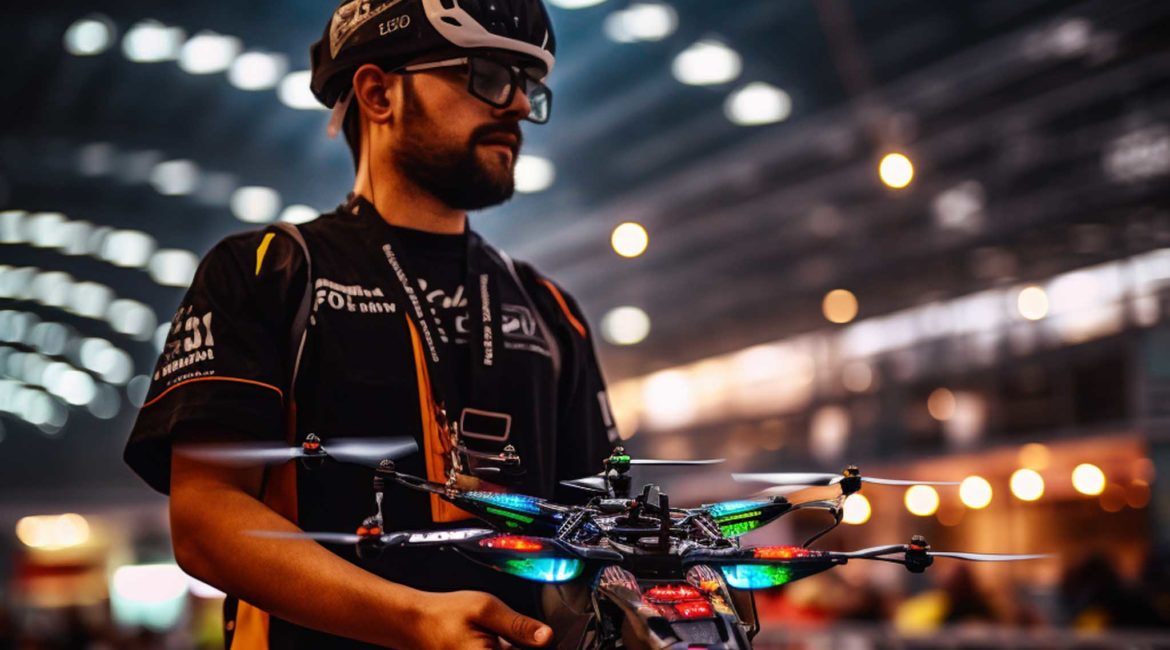Introduction
Drone racing has taken the world by storm, offering an adrenaline-fueled experience for both pilots and spectators. This high-speed sport combines cutting-edge technology with the thrill of competition, pushing the boundaries of what drones can do. In this article, we will delve into the exciting world of FPV (First-Person View) racing, exploring its origins, the equipment involved, the challenges faced by pilots, and the growing popularity of this thrilling sport.
Origins of Drone Racing
Drone racing can be traced back to the early 2010s when enthusiasts began experimenting with modified consumer drones for recreational racing. The concept quickly gained traction, and organized competitions started popping up around the world. What began as a niche hobby soon transformed into a full-fledged sport, capturing the imagination of pilots and spectators alike.
The Evolution of FPV Racing
FPV racing emerged as the dominant form of drone racing, providing an immersive experience by allowing pilots to view the flight through a live video feed transmitted from an onboard camera. This first-person perspective adds a whole new level of excitement and intensity to the sport, making participants feel like they are piloting the drones themselves.
Essential Equipment for FPV Racing
To participate in FPV racing, pilots require specialized equipment. The key components include:
1. Racing Drones
Racing drones are lightweight, agile, and built for speed. They are equipped with high-performance motors, aerodynamic frames, and onboard cameras for the FPV feed. These drones can reach astonishing speeds, often surpassing 100 miles per hour.
2. FPV Goggles
FPV goggles are worn by the pilots to receive the live video feed from the onboard camera. These goggles provide an immersive experience, giving the pilots a real-time view from the perspective of the drone. The high-resolution screens and low latency ensure a smooth and responsive feed.
3. Remote Controller
The remote controller is used by the pilots to control the drone’s flight. It consists of a transmitter, joysticks, and switches, allowing precise control over the speed, direction, and maneuvers of the drone.
Mastering the Art of FPV Racing
Becoming a skilled FPV pilot requires practice, dedication, and a thorough understanding of drone flight dynamics. Pilots must learn to navigate challenging courses, perform intricate maneuvers, and maintain control at high speeds. They often hone their skills in simulators before taking to the skies to ensure a solid foundation of expertise.
The Challenges Faced by FPV Pilots
FPV racing presents unique challenges for pilots. The high speeds and tight courses demand exceptional reflexes and hand-eye coordination. Pilots must navigate through obstacles, execute hairpin turns, and compete against other skilled racers. The pressure to perform under intense competition adds another layer of difficulty.
The Rise in Popularity of Drone Racing
Drone racing has witnessed a meteoric rise in popularity over the years. The sport’s fast-paced action, technological innovation, and accessibility have attracted a growing community of enthusiasts. Professional racing leagues, such as the Drone Racing League (DRL), have emerged, showcasing the talent and pushing the limits of what is possible in this exhilarating sport.
FPV Racing: A Spectator Sport
Drone racing is not just for the pilots. Spectators can also get in on the action through live events and broadcasts. The FPV goggles used by the pilots can be connected to large screens, allowing the audience to experience the thrill of the race from a pilot’s perspective. This unique spectator experience adds an immersive element and further enhances the excitement of the sport.
Safety Considerations in Drone Racing
Safety is of paramount importance in drone racing. Pilots must adhere to strict guidelines and regulations to ensure the well-being of themselves and others. Spectators are kept at a safe distance from the racing area, and proper safety equipment is used to mitigate the risks associated with high-speed flights. Additionally, organizers work closely with local authorities to secure suitable locations and obtain necessary permits.
The Future of Drone Racing
The future of drone racing looks promising. With advancements in drone technology, we can expect even faster and more agile racing drones. The sport is likely to attract a broader audience, including sponsors and investors, leading to increased funding and opportunities for professional racers. Moreover, the integration of virtual reality and augmented reality technologies may offer new ways to experience and engage with drone racing.
Conclusion
Drone racing, particularly FPV racing, has revolutionized the world of sports and technology. It combines the thrill of high-speed racing with the excitement of piloting drones through immersive first-person perspectives. As the sport continues to grow, it captivates both pilots and spectators, pushing the boundaries of what drones can achieve. With safety measures in place and technological advancements on the horizon, the future of drone racing looks brighter than ever.





